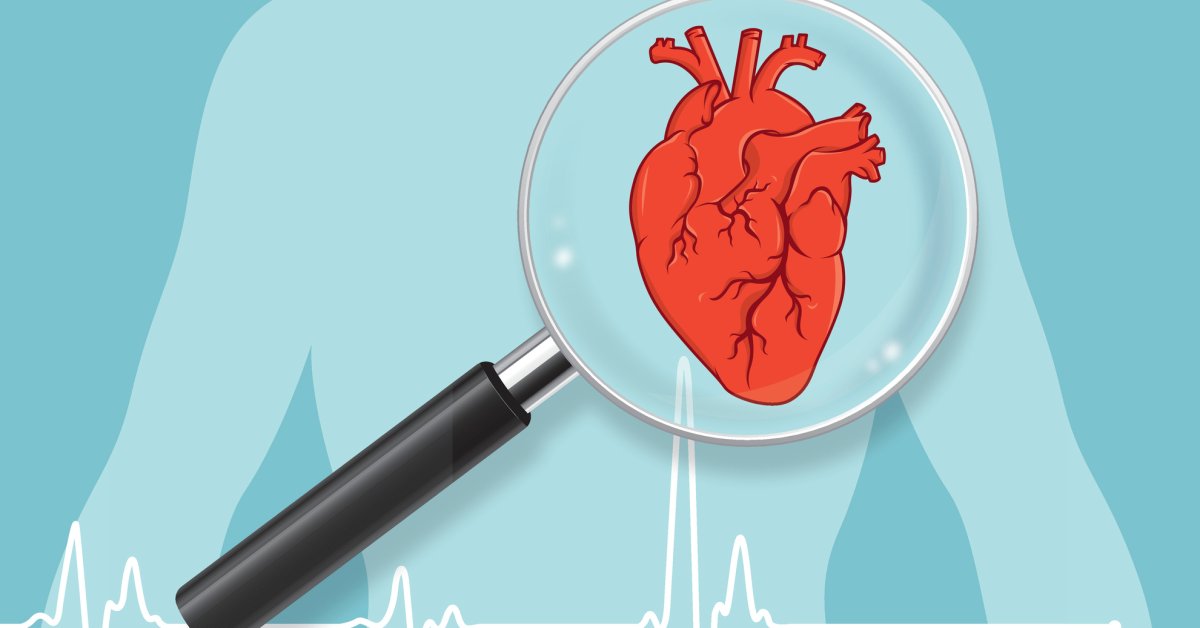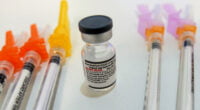What to Know About Diabetes condition – At first it seemed like a routine call—something the paramedics had dealt with countless times before. A man in his mid-50s was having a heart attack, and his physician had called for emergency support. But when the paramedics arrived, the physician pulled them aside and told them something peculiar: the man had no cardiovascular symptoms whatsoever.

The man had come to his doctor’s office because he’d woken early the previous morning sweating and with a sharp pain in his left wrist. These symptoms had quickly subsided and he’d gone back to sleep. Later, after going about his day, he’d visited his doctor to report the episode. The man showed no outward signs of heart trouble; he was breathing and acting normally—asking what “all the fuss was about”—and his heart rate and blood pressure weren’t elevated. However, when his doctor performed an electrocardiogram—a test that measures the electrical activity of the heart—it showed plainly that the man had experienced a heart attack. The paramedics repeated the test and came to the same conclusion. Later, at the hospital, further tests confirmed the attack and revealed a partial blockage of one of the man’s coronary arteries. Surgeons stented the blocked artery and, after a few days in the hospital, the man returned home.
The man’s experience was documented in a 2017 medical case report in the Irish Journal of Paramedicine, and it illustrates something experts call a “silent heart attack.” This is a type of attack that doesn’t cause typical or obvious symptoms. “Crushing chest pain that radiates down the left arm is the classic symptom,” says Dr. Amgad N. Makaryus, a professor of cardiology at the Zucker School of Medicine at Hofstra/Northwell in New York. “With silent ischemia, which is more common in diabetics, people develop atypical symptoms, or they might not develop symptoms at all.”
By some estimates, roughly 1 in 4 heart attacks is “silent.” This is likely an undercount because many of these heart attacks go unrecognized and unreported; most are only identified after the fact using an electrocardiogram or other test. While roughly half of silent heart attacks involve atypical symptoms, the other half are believed not to cause symptoms at all. And research has found that people with Type 2 diabetes may be up to twice as likely to have a silent heart attack compared to those who don’t have diabetes.
Silent heart attacks are dangerous precisely because they often occur undetected. Some studies have found that people who have experienced a silent heart attack are at greater risk of death than those who have a heart attack with recognized symptoms. “Compared to those without a heart attack, those who have had a silent heart attack have a three-fold greater likelihood of dying from heart disease in the future,” says Dr. Nathan Wong, director of the Heart Disease Prevention Program at the University of California, Irvine.
How can those with Type 2 diabetes protect themselves from silent heart attacks? Here, Wong and others explain everything you need to know—whether you have Type 2 diabetes yourself or are caring for someone with the condition.
Not so silent
The term “silent” heart attack is a bit of a misnomer. While estimates suggest that half of these attacks cause no symptoms at all, experts say that many, if not most, silent heart attacks likely cause symptoms that people either miss or misconstrue. “I think if you go back and take a really detailed medical history of people who have had a silent heart attack, most of the time that will reveal symptoms,” Makaryus says.
For example, the middle-aged man with the silent heart attack—the one who wondered what all the fuss was about—had woken up early in the morning with wrist pain and unexplained sweating. Makaryus says these symptoms—and especially their timing—pointed to a possible heart event. “Most heart attacks happen early in the morning when cortisol spikes,” he explains. Cortisol is a hormone that increases activity in the sympathetic nervous system, which includes the heart, and its levels tend to peak first thing in the morning. “If someone awakes from sleep with symptoms, that’s something we always take very seriously,” he adds.
While the morning hours may be a particularly risky time, silent heart attacks don’t follow any set schedule. Also, Makaryus says the possible signs and symptoms of a silent heart attack are numerous. These include mild pain in the chest or left arm, shortness of breath, fatigue, lightheadedness, sweating, pain in the jaw or back, nausea, heartburn, or indigestion. Pay special attention to symptoms that appear suddenly, he says, or those that represent a change from your baseline. “If all of a sudden you walk up a flight of stairs and you’re huffing and puffing, that’s much more concerning than symptoms that are long-standing,” he explains. “I tell patients with diabetes not to minimize their symptoms. Better to come in.”
If your medical provider suspects that you’ve had a heart attack, they may be able to confirm this using an electrocardiogram (EKG), an echocardiogram, or one of several other diagnostic tools.
The link between diabetes and silent heart attacks
One of the common complications of Type 2 diabetes is nerve damage, also known as neuropathy. This nerve damage is caused by elevated blood-sugar levels, and it can cause numbness, tingling, pain, sensitivity, and weakness—most often in the feet or other limbs. In such cases it’s termed “peripheral neuropathy.”
However, neuropathy can also affect the autonomic nervous system, which controls the body’s heart and internal organs. “Neuropathy can cause a loss of sensation to different parts of the body—not only the feet and toes, but also potentially to organs such as the heart,” Wong explains. This is sometimes termed cardiac autonomic dysfunction or “autonomic neuropathy.” The nerves of the autonomic nervous systems can be severely damaged. “The result is that people will not necessarily feel chest pain, and this is one way that a silent heart attack is thought to be connected to diabetes,” he says.
It’s worth highlighting that people with Type 2 diabetes who experience peripheral neuropathy don’t necessarily have the type of nerve damage that can hide a heart attack. “Peripheral neuropathy is much more common than autonomic neuropathy, and there’s not much concordance between the two,” says Dr. Om Ganda, an associate professor of medicine at Harvard Medical School and a research investigator at the Harvard-affiliated Joslin Diabetes Center. “So if you have symptoms of peripheral [neuropathy], that doesn’t mean you must also have autonomic neuropathy.”
While a person may not be able to “feel” autonomic neuropathy, there are ways to detect it that don’t involve formal medical tests. Orthostatic hypotension—a drop in blood pressure that occurs when a person sits or stands up suddenly—is one indicator, Ganda says. If you’ve noticed that you feel lightheaded or dizzy after sitting or standing, and especially if this is a new symptom for you, that’s worth mentioning to your care provider. “Erectile dysfunction can also be a sign of autonomic neuropathy,” he says. So too is gastroparesis, or abnormally slow stomach-emptying. This can leave you feeling stuffed even hours after a meal. It can also cause abdominal pain, heartburn, bloating, or nausea. Again, if you’ve noticed any of these symptoms crop up suddenly, tell your doctor.
Researchers believe that other factors—such as a higher-than-average pain threshold, or unusually high levels of pain-numbing hormones—may also contribute to silent heart attacks. But these factors are not specific to people with diabetes.
How to protect yourself
A lot of time and energy has been poured into the study of screening people with Type 2 diabetes to assess their risk for heart trouble, including silent heart attack. “Is it better to screen, and can we make a difference if we do?” says Makaryus. “The conclusion in most of these studies was no, screening does not make a difference.”
He says the reason for this is simple: People with Type 2 diabetes are already at extremely high risk for heart disease and related complications. In fact, roughly 3 out of 4 diabetes-related deaths are caused by poor blood flow to the heart. “The conclusion is that if someone has Type 2 diabetes, [their physician] should put them on all the medications and other things you need to do for the primary prevention of cardiovascular disease,” Makaryus says. That almost certainly means taking a statin drug to control levels of fats in the blood. It also means regular checkups with your care team to make sure your other heart-disease indicators—namely your blood pressure, cholesterol levels, and blood glucose—are under control.
A healthy lifestyle is also an important safeguard. “Almost every day, you should try to have 30 minutes of exercise,” Makaryus says. Avoiding tobacco and eating a healthy diet also make a difference. “The evidence suggests the DASH diet is very good for people with diabetes,” he says. This diet, which was originally formulated to help people control hypertension—a common complication for those with Type 2 diabetes—involves lower sodium intake and an emphasis on fruits, vegetables, whole grains, and low-fat animal products.
Ganda says that adopting healthier habits earlier in life can pay huge dividends down the road. “In the United States, 96 million people have prediabetes,” he says. Many of these people don’t know it, and many could avoid progressing to full-blown Type 2 diabetes if they modified their lifestyle, he says. Also, rates of Type 2 diabetes are rising in young adults and even in children. “Lack of physical activity is part of that, I think,” he says. “Young people are moving and exercising less because they spend time behind the phone or the computer screen.”
He emphasizes that some of the variables that give rise to Type 2 diabetes are out of a person’s control. For example, a person’s genes certainly play a role in predetermining their risk for both Type 2 diabetes and complications like heart disease. Still, each of us can take steps to mitigate these sorts of risks. “People born with these genes may express them sooner due to unhealthy lifestyles,” he says.
Perhaps the most important takeaway for those with Type 2 diabetes: Understand that your heart is at risk. “Diabetes is really a cardiovascular condition,” Wong says. “Most people with diabetes will eventually die from a heart attack, a stroke, or another complication of cardiovascular disease.”
He says recognizing this and doing something about it—monitoring your blood pressure and other heart-health indicators, living a healthy lifestyle, and keeping an eye out for the subtler symptoms of heart trouble—are essential to protecting yourself from a silent heart attack.
“I think the overarching theme here is that prevention is key,” Wong adds.









